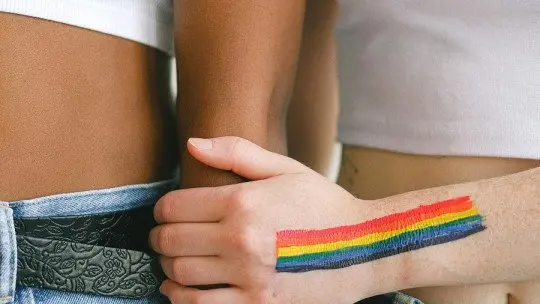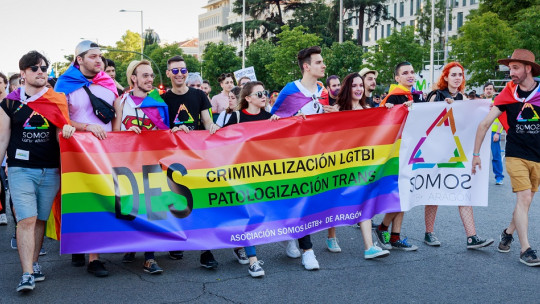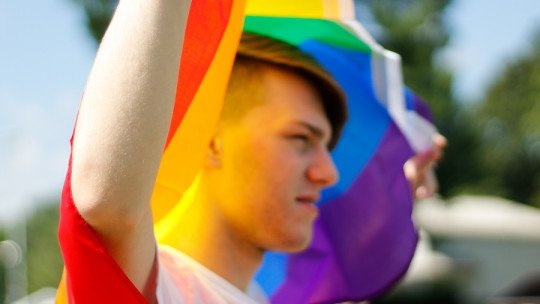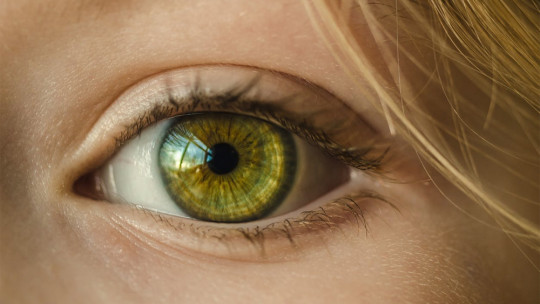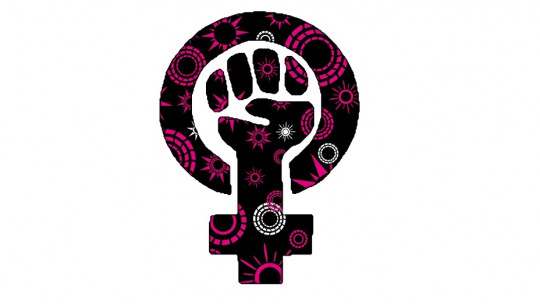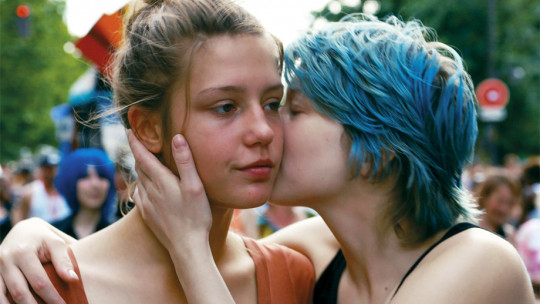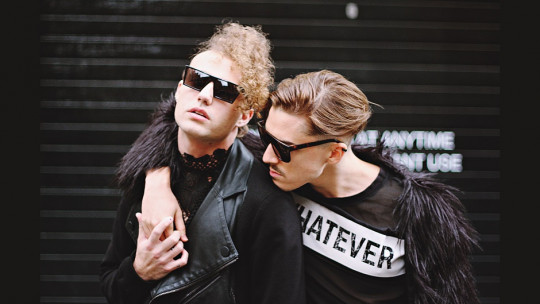
We live in a time in which sexuality and the high level of diversity in which it can present itself is becoming a valued and increasingly visible part of society.
As the years go by, a level of sexual freedom unprecedented in history is being reached In this way, over the last decades, we have begun little by little (since in many cases it is still criminalized or pathologized) to accept the existence, make visible and protect the existence of sexual orientations other than heterosexual. One of these orientations, the best known and until recently persecuted, is homosexuality or attraction to people of the same sex.
Being gay or lesbian implies the existence of attraction towards people of the same biological sex as one’s own. However, human sexuality is broad and diverse, and not all people who are attracted to people of the same sex experience their sexuality in the same way. That is why throughout this article We are going to see different types of homosexuality and orientations in which there may be attraction to people of the same sex

Homosexual, gay, lesbian
At an operational level and in a generic way, we can consider homosexuality as attraction to people of the same sex In other words, if you are a man you are attracted to men and if you are a woman you like women. As a general rule, this interest in individuals of the same sex occurs on both a sexual and romantic level.
Although the term gay can be used to talk about both homosexual men and women, as a general rule, homosexual men are called gay, while lesbian is understood as a woman who is attracted to women.
But as said before, Sexuality is not something homogeneous that can be labeled in a fixed and restrictive way Not all gays and lesbians are gay or lesbian in the same way or experience their sexuality in the same way. In fact, attraction to people of the same sex can even appear without the person’s sex being itself the core of sexual interest. Let’s see different typologies below.
Types of homosexuality according to the experience of one’s own orientation
Same-sex attraction can be experienced differently depending on the circumstances and personality of each individual.
In this sense we can find two types of homosexuality, depending on whether one’s sexuality is experienced as something positive or whether it is rejected by the person themselves. One can also contemplate the possibility that a person does not know their true orientation and ends up discovering it over the years.
1. Ego-syntonic homosexuality
The majority of the homosexual population lives their sexuality as something egosyntonic, that is, as something they are in tune with and part of them
Their impulses and desires are perceived as positive, pleasant and satisfying. In other words, they have their sexual orientation well integrated into their lives, seeing homosexuality as something normal of which there is no need to be ashamed. These are the type of individuals who seek or want social integration and the normalization of their orientation.
2. Egodystonic homosexuality
Gays, lesbians and bisexuals can currently express their existence and their tastes with relative normality. However, Throughout history, homosexuality has been frowned upon and even persecuted instilling in the collective imagination the thought that being attracted to someone of the same sex is something negative, despicable and that should be hidden or even eliminated.
This type of thinking has been transmitted through generations, still valid today in the thinking of some people. There are countries in which gays and lesbians are persecuted and attacked with impunity for their orientation without them being protected by the law, and In others, an accusation of being one can even lead to the death penalty Even in a society like ours, being homosexual can cause rejection from family or friends, difficulties at work, bullying at school or at work, and even attacks.
This set of elements can cause some men and women to live their sexuality in an aversive way, being ashamed of their tastes and desires, hiding that part of themselves and even attacking those who experience their orientation as something normal. Because of this, these people have a high level of life dissatisfaction and a high level of frustration. In many cases they decide to lead a typically heterosexual life, sometimes being able to have sporadic relationships with their true object of desire that they live with shame. It is not uncommon for anxiety or mood disorders to appear, as well as substance abuse.
3. Latent homosexuality
Most gays and lesbians have taken a while to discover and come to terms with their sexual orientation It must be taken into account that the majority of the population is heterosexual and has been educated in a way in which heterosexuality is seen as normative.
Therefore, it is not unusual to think throughout development that we will like people of the opposite sex. Generally, it is during adolescence, the stage in which the first romantic and sexual relationships begin, the moment in which one’s orientation is defined towards a specific object of desire (whether of the opposite sex or the same).
In some cases, people assume that they are heterosexual because it is the most common thing, without ever questioning their preferences. However, at a given moment a person of the same sex can attract her attention and cause the subject to end up discovering that deep down she has a preference for people of the same sex. These would be people who have not renounced homosexuality, but have never considered being so
Sometimes it can overlap with an egodystonic homosexuality that the subject has tried to hide. Knowledge of one’s own homosexuality can be a liberating factor for the person, although depending on the beliefs and situation of each subject it can also cause great pain and feelings of guilt.
Homosexuality according to the level of exclusivity
People often tend to categorize the tastes and preferences of the population in a dichotomous way: either you are heterosexual or you are homosexual. They also put an intermediate point, bisexuality. However, as we have already said, Human sexuality is dynamic and fluid, with a large number of intermediate situations
Throughout the 1940s and 1950s, Kingsley created a seven-level scale to attempt to disentangle and decorse the idea of a completely closed and unchanging heterosexuality, homosexuality, and bisexuality, developing a continuum between exclusive heterosexuality and homosexuality. .
Below we indicate those scales in which attraction towards people of the same sex appears
5. Exclusive homosexuality
This category refers to the gay population that is only sexually attracted to people of the same sex people of the opposite sex are not sexually stimulating.
6. Predominantly heterosexual with frequent homosexual contacts
This type of individual is mostly attracted to people of the opposite sex, but He also feels attraction to numerous people from the same group as himself It could be considered a form of bisexuality with a tendency towards heterosexual relationships.
7. Mainly heretosexual with sporadic homosexual contacts
These are heterosexual people who feel sexual activation and attraction when faced with certain people of the same sex maintaining carnal relations with them.
Types according to the type of existing attraction
When we think of a gay man or a lesbian woman, a person who feels physical and emotional attraction to people of the same sex comes to mind. However, it’s not always like that.
Although it is not the most common, sometimes It is possible to find people who are only sexually or emotionally attracted to people of the same gender
8. Affective-sexual attraction
This is the most common type of attraction, and what is generally imagined when talking about homosexuality. In these cases The person will feel an interest in people of the same sex, both at the level of physical desire and at the level of emotional bond
9. Only sexual attraction
This type of attraction assumes that the person will feel a sexual interest in people of the same sex, but This attraction is not transferred to the emotional field The person may be sexually homosexual but emotionally heterosexual.
10. Only emotional attraction
It is possible to find cases of individuals who feel a romantic inclination towards people of the same sex, but This inclination does not include any type of sexual desire They may be heterosexual people who fall in love with a person of the same sex without ceasing to be heterosexual.
There can also be a generalized interest in the same sex without feeling sexual desire (as we will see later, this can be the case of asexual people who are romantically attracted to people of the same sex).
Other sexual orientations in which there may be attraction to people of the same sex
Human sexuality is very diverse and varied What produces desire and excitement in us, that makes us fall in love and that makes us choose the person we love can vary enormously and, as we have seen, may not be exclusive.
Although the essential characteristic of homosexuality is the fact that there is emotional-sexual attraction for people of the same sex, it is not exclusive to this sexual orientation, there are different sexualities in which it can appear. Some of them are the following.
Bisexuality
Considered by many people as a sexual orientation that is found at the midpoint between heterosexuality and homosexuality (although there may be preferences towards one or the other), bisexuality is conceptualized as sexual attraction towards people of both the same and the opposite sex. Thus, both men and women can be of interest to these people.
Sporadic heterosexual contacts
This category includes all those bisexual people who, although they are mainly attracted to people of the same sex, occasionally feel desire for some people of the opposite sex.
Frequent heterosexual contacts
There are people who, although they generally feel attracted to people of the same sex, also feel stimulated and attracted to people of the opposite sex. It could be considered a form of bisexuality with a tendency towards homosexual relationships.
Pansexuality
Pansexuality is defined as sexual attraction to specific people regardless of their gender. Although due to its definition it can be confused with bisexuality, in the case of pansexuals, attraction ignores the nuance. It is not that these people are attracted to both men and women, but rather that both sex and gender identity are elements that are not taken into account.
It will be other aspects that will attract the attention of the pansexual, attraction appearing before other characteristics such as personality. In this way, they can start relationships with people of both the same and the opposite sex.
Polysexuality
This category refers to people who are attracted to people because of their gender identity, not to their sex. The attraction is towards groups and collectives with a specific gender identity, regardless of whether they are men or women.
Homoromantic heterosexuality/heteroromantic homosexuality
Although it cannot be completely considered a type of sexual orientation, to understand this differentiation it is necessary to take into account the difference between sexual orientation and romantic orientation. Although they generally go hand in hand, there are cases in which people who are sexually attracted to a specific sex on an emotional and romantic level only feel a connection with the opposite sex.
In other words, sexual desire is directed towards one sex and romantic desire towards the other It does not refer to a specific infatuation with someone of the opposite sex to that of our sexual preference, but rather to a continued condition in which the affective is dissociated from the instinctual. Thus, we could find heterosexuals who fall in love with people of the same sex or homosexuals who do the same with people of the opposite sex.
Asexuality
Although asexuality is defined by the absence of sexual desire of any kind, this does not mean that people with this type of sexual orientation cannot develop emotional bonds of a romantic nature.
That is, just because they don’t feel sexually attracted or interested in sexual aspects doesn’t mean they can’t fall in love. And said infatuation can occur towards people of both the opposite sex (heteroromantic asexuality) and the same sex as one’s own (homoromantic asexuality).

